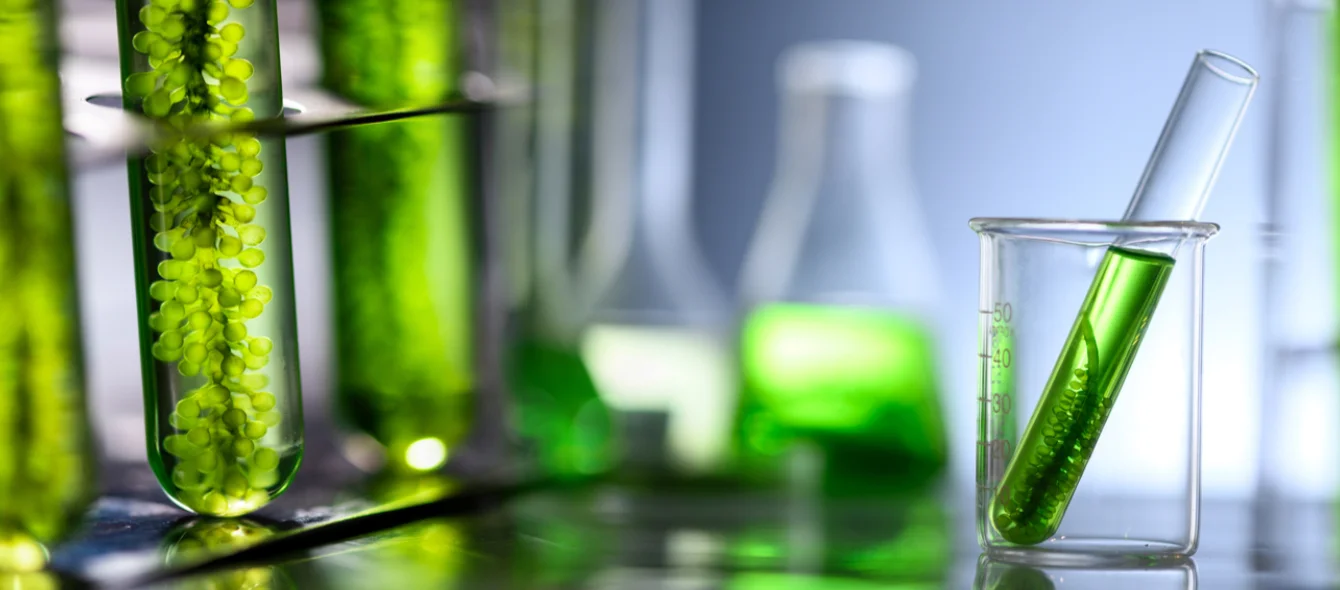Photosynthesis enables life on earth. This biochemical reaction takes place in plants and certain bacteria in order to convert water and carbon dioxide to glucose and oxygen using the energy of the sun as a catalyst. They need the carbohydrate to grow, and the gas is an integral component of the air inhaled by human beings and animals alike. For quite some time now, researchers have been trying to mimic the process in a laboratory. This is because an intermediate step results in hydrogen – one of the great white hopes of the energy transition. A German-Irish team has finally found a way to conduct photosynthesis even at night, in other words without sunlight.
Nature breaks photosynthesis down into two steps: the light reaction converts light energy to chemical energy, and water molecules are split into hydrogen and oxygen. The dark reaction uses the energy generated and hydrogen to convert carbon dioxide to glucose. This can occur during the day or in darkness, during the night. Both steps expel oxygen as a ‘waste product’.
One reaction, many possibilities
While this process can be replicated in the laboratory, so far costs have been high and efficiency has been low. Nevertheless, numerous products are dedicated to reproducing this reaction artificially. After all, it is interesting for various applications: The biomass resulting as an end product can be used to produce alternative fuels. Researchers also hope to obtain hydrogen in this way. And given that this removes carbon dioxide from the air, the process also lends itself to carbon capture applications.
One major problem, however, lies in the fact that so far, artificial photosynthesis has only been able to produce hydrogen and other chemicals during the day. While plants can store the energy and thus continue to convert it at night, scientists are still searching for an appropriate storage medium.
Hope rests on copper molecule
A group of researchers from the universities of Ulm, Jena and Dublin City as well as from the Leibnitz Institute for Solid State and Materials Research in Dresden has presented a concept enabling solar energy to be used after sundown. They engineered a copper complex capable of absorbing and storing electrons created through artificially induced photosynthetic processes and claim that these electrons remain in the molecule with the designation Cu(I) 4H-imidazolate for up to 14 hours, during which they can be used.
However, the scientists are currently experimenting on a very small scale. They are conducting reactions in a test tube at low concentrations. Despite this, they are confident that their idea will also work in bigger applications. It would take eight hours to charge the store, the capacity of which would exceed 70 percent even after several cycles.
Ready for market no earlier then ten years from now
Further research is needed to determine whether electrons obtained by this method can actually be used in electrolysis or solar water splitting. Only then could they be used to obtain hydrogen. What is also unclear is the amount of energy the particles contain. Experts from the Fraunhofer Institute for Technical Trend Analysis predict that practicable methods for producing fuels by photosynthetic processes will take anywhere between 10 and 20 years to engineer. However, since the team has succeeded in breaking the day-night cycle, the stage has been set for making more efficient use of artificial photosynthesis.
Symbolic photo; photo credit: shutterstock.com, Chokniti Khongchum
